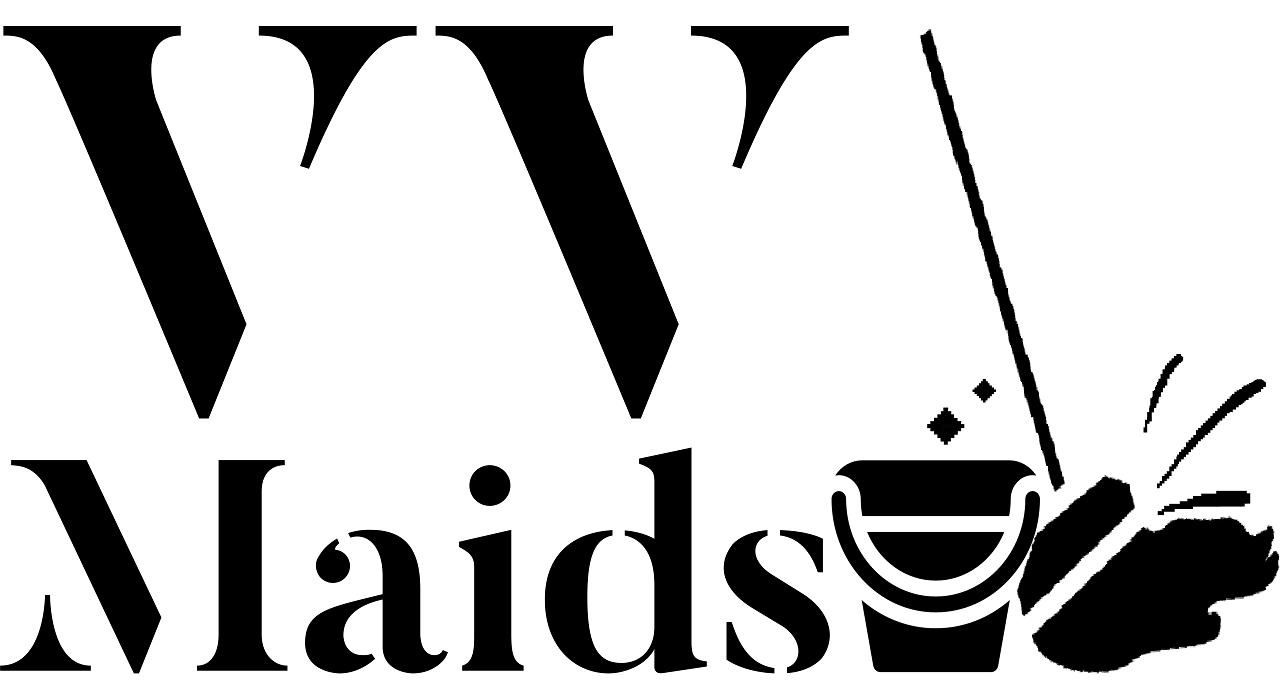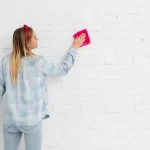Walls, like other household surfaces, can gather stains, dust, and scuffs after a while, so it’s essential to take care of them regularly. Since walls might be embellished with different paint types or wallpaper, we can’t use the same cleaning technique for all of them, and we should consider some factors first.
Generally, you should wipe with a sponge and dry with a microfiber cloth, starting with a side-to-side motion from the top of the wall, then passing from top to bottom, and then drying with the same top-to-bottom motion. This prevents further staining of the wall.
Now, with that aside, we need to understand some basics about different types of wall paint, finishes, and wallpapers.
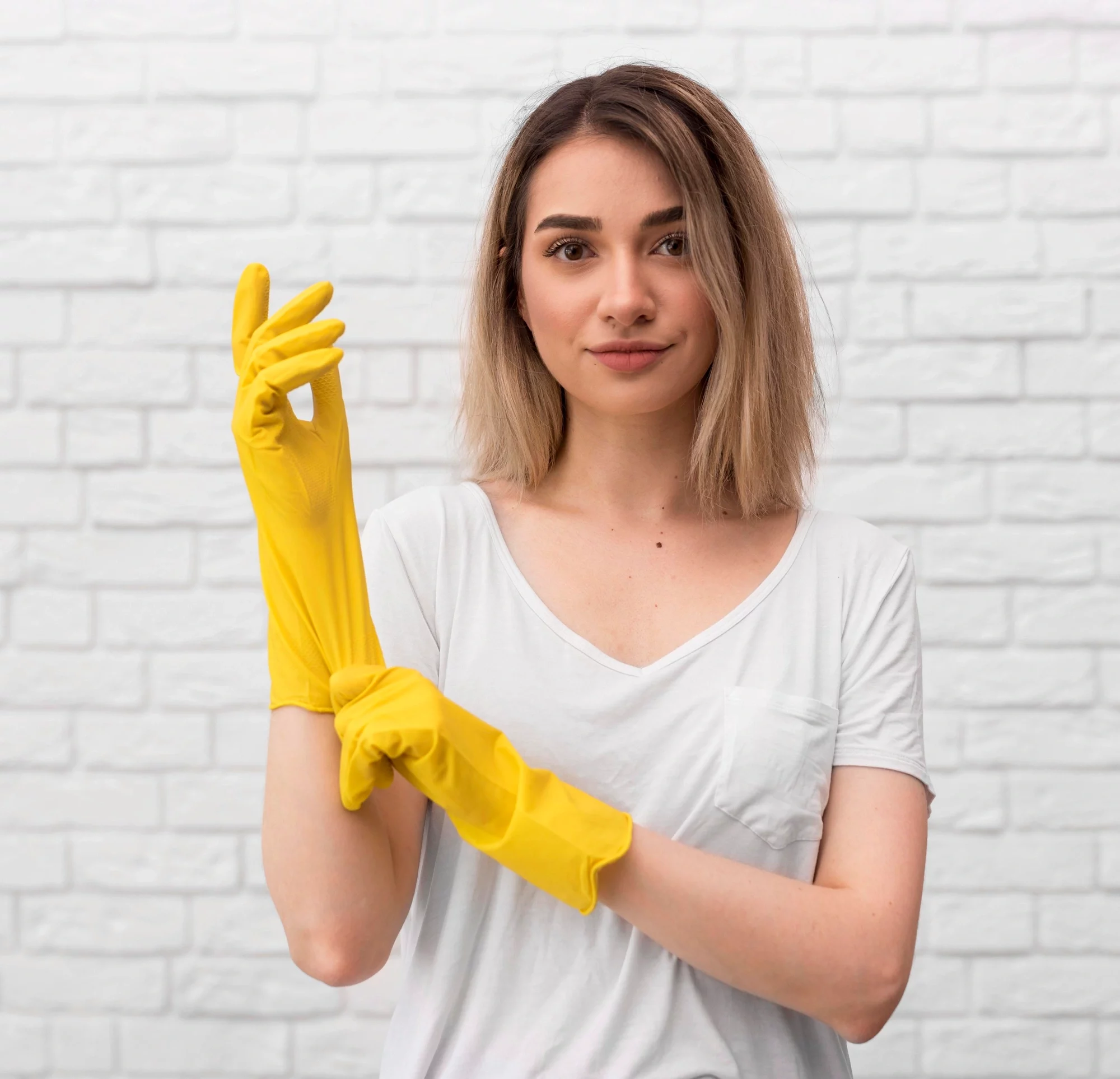
Let’s Start the Cleaning Process: Dusting
The first step you need to take is to clear the dust. This step is the same no matter what paint or wallpaper you have on your wall. But remember, you need to be gentle.
Necessary Supplies:
- A Vacuum Cleaner or Microfiber Cloth
Start at the top of the wall and, clear away any cobwebs or dust. Use a step ladder or stool if needed to get to the highest points of the wall. Make sure that you clean the corners as well.
Oil-Based and Water-Based Paints
How to Clean Water or Latex-Based Paint
It’s the most common interior wall paint and it’s quite resistant to chipping and cracking but it isn’t very receptive to water-based paint cleaning.
Necessary Supplies:
- Sponge or microfiber cloth
- Warm water
1. Dampen your sponge or cloth and start wiping gently. Remember you should do it side to side then top to bottom.
2. If there is a stain that is not coming off, a small amount of baking soda can help. Apply a small amount to your sponge or cloth and rub very lightly. Be careful as this can cause damage if you don’t do it gently enough.
3. At the end use a microfiber cloth to dry the wall from top to bottom.
How to Clean Oil-Based Paint
This type of paint is mostly used in damp areas; it is more durable than latex paint and can tolerate frequent cleaning.
Necessary Supplies:
- Sponge or Microfiber Cloth
- Dish Soap
- White Vinegar
- Warm Water
1. First, mix one tablespoon of dish soap and half a tablespoon of white vinegar per 4 cups of water.
2. Dip your sponge or microfiber cloth into the solution, wring it out until it is only slightly wet, and then wipe.
3. If any stain isn’t going away, a tougher sponge can help, or scrub harder till the stain is gone.
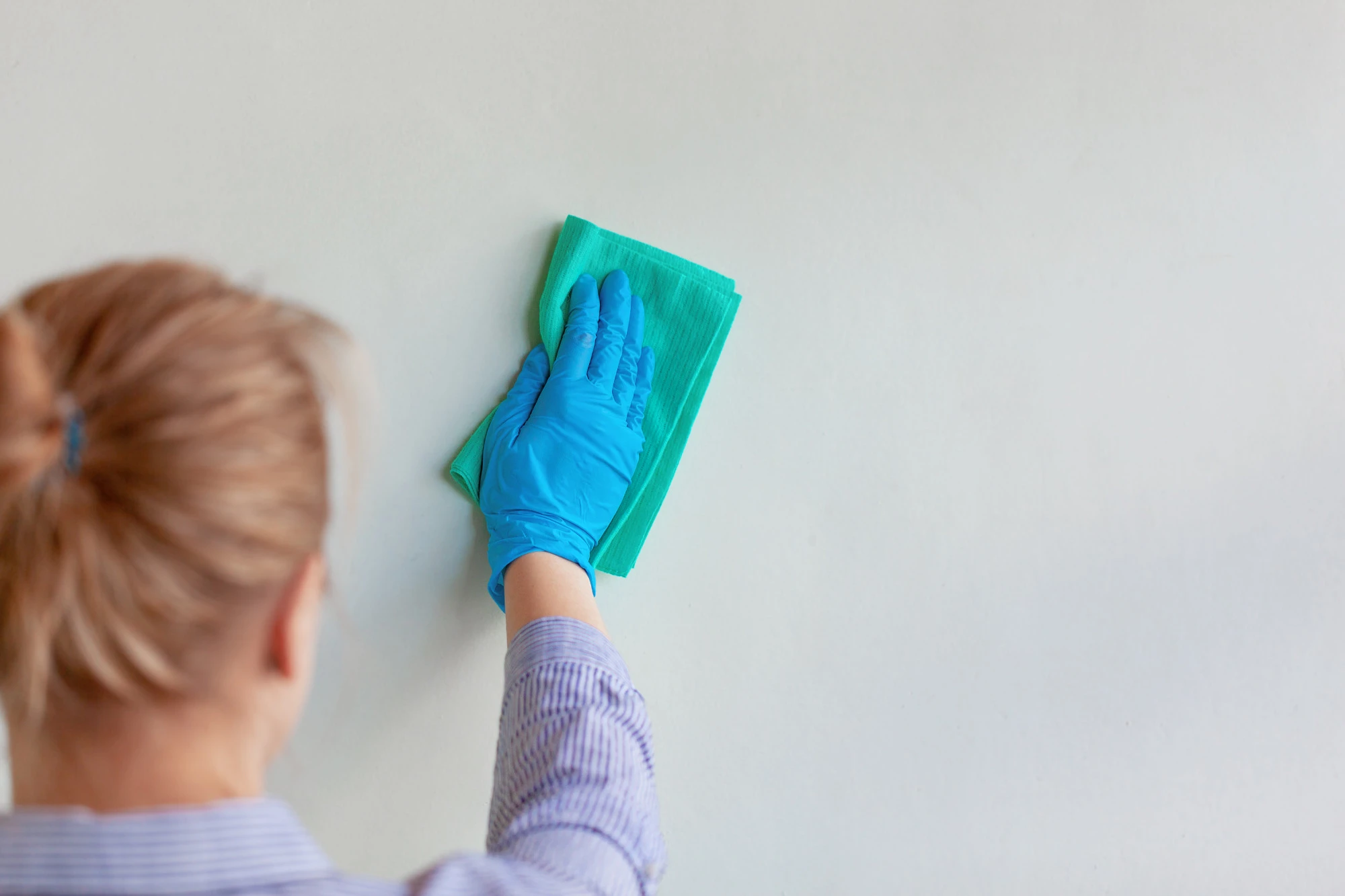
4. After doing it for the first time with the cleaning solution, you need to do it again with just water.
5. Then use a microfiber cloth to dry the wall from top to bottom.
Cleaning Different Types of Paint Finishes
Flat
This paint finish has a dull chalky finish, so it doesn’t hold up well to scrubbing. To avoid any damage you need to be extra careful.
Satin
Satin finish is used in high-traffic areas. It is shinier and more durable than flat finish so you don’t need to be so worried about ruining the wall paint. However, we still recommend that you avoid using strong cleaners.
Semi-Gloss
Semi-gloss finish is much stronger than satin and also much shinier, so it will not easily wear down and get damaged by cleaning. This type of finish is used mostly in kitchens and bathrooms as it is durable against moisture and most chemicals, but harsher cleaners can still cause damage.
Wallpapers
The process of cleaning wallpapers is different from cleaning the painted walls and you need to keep a few important points in mind before starting the cleaning process.
Wallpapers are generally split into two main groups: washable and non-washable.
How to Clean Washable Wallpapers
Washable wallpapers are designed to handle cleaning without getting damaged. They work well in places that can get dirty or damp. “Vinyl Wallpaper” has a waterproof surface, so you can easily wipe it clean, while “Non-Woven Wallpaper” can handle light cleaning without looking or feeling different. These washable wallpapers are great for spots that need regular cleaning to stay neat.
Necessary Supplies:
- Sponge or Microfiber Cloth
- Warm Water
- Dye-Free Dish Soap
1. Start with mixing 1 tablespoon of dye-free dish soap per 4 cups of warm water.
2. Dip your sponge or cloth into the mixture and squeeze it out until damp. Wipe the wallpaper in an up-and-down motion to keep the sponge or cloth from getting stuck on the seam of the wallpaper.
3. Use a microfiber cloth to dry the wallpaper.
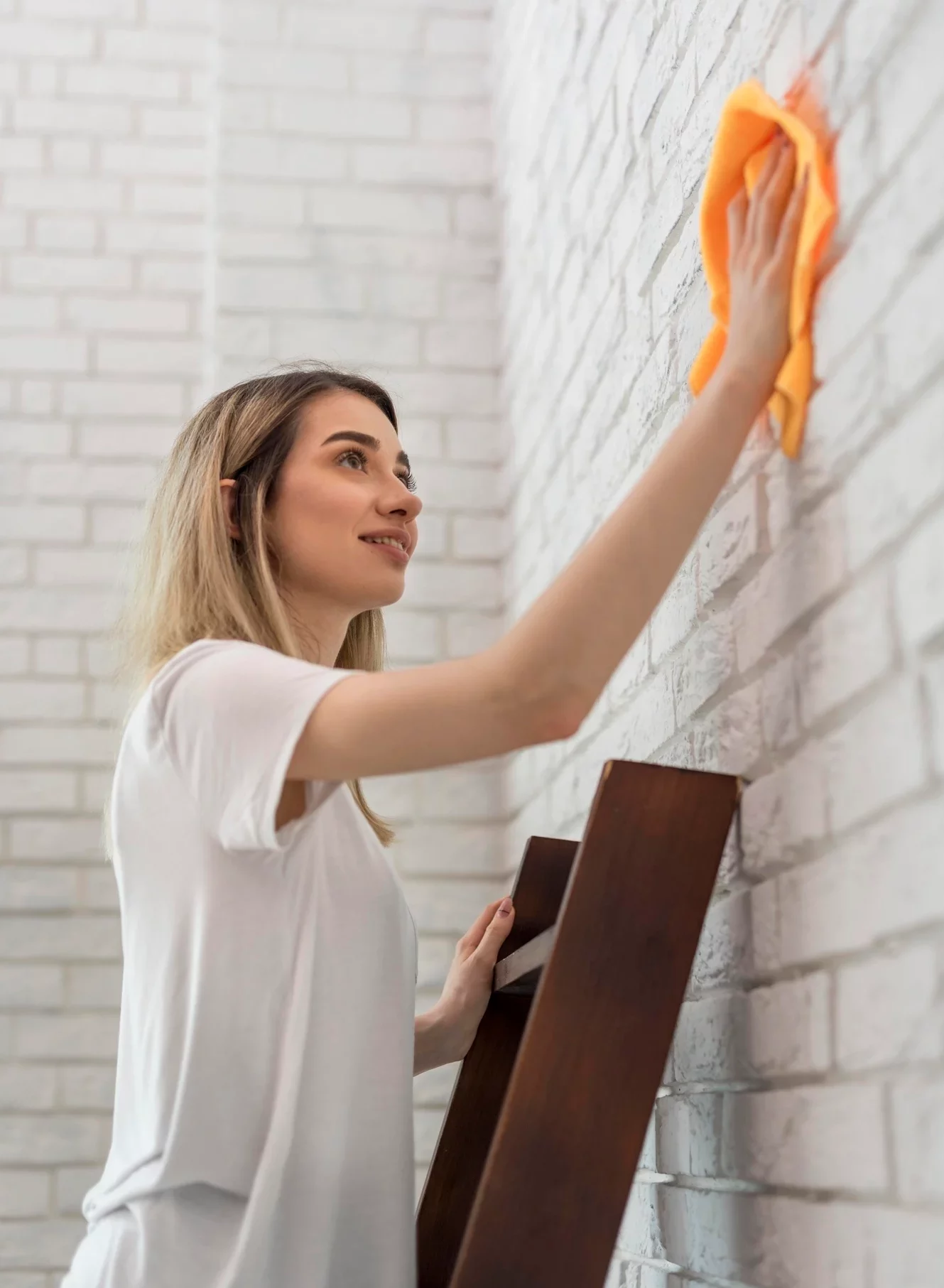
How to Clean Non-Washable Wallpapers
Non-washable wallpapers are easily harmed by moisture, and they shouldn’t be cleaned with water or liquids. There are two common non-washable wallpaper types: “Paper Wallpaper,” which can get damaged in damp areas because it’s made of paper and might bend or tear; and “Grasscloth Wallpaper,” which is crafted from natural materials like jute and grass and needs careful handling to keep its special look and feel. These non-washable wallpapers are better for places with fewer people coming through, where stains and dirt buildup are less common, and maintaining their visual appeal only requires little maintenance, such as dusting.
Necessary Supplies
- A Dry Cleaning Sponge
In this case, your best bet is to use a dry cleaning sponge. In a circular motion, gently rub the dirty area with the dry sponge. To avoid damaging the wallpaper, avoid applying too much pressure.
Consult with VV Maids Cleaning Professionals
If you’re overwhelmed with cleaning your painted or wallpapered walls yourself, our professional maids will be there for you to clean your walls or even help you with other house cleaning tasks that you need assistance with.
VV Maids, a cleaning services company that offers house cleaning services in and near Commack, NY, is ready to do all the work for you. If you reside in Long Island, don’t hesitate to contact us and book a service.
Frequently Asked Questions
What are the differences between water-based and oil-based paints in terms of cleaning?
Water-based paints, also known as latex paints, are common for interior walls but are less receptive to water-based cleaning. Oil-based paints, often used in damp areas, are more durable and can tolerate frequent cleaning.
Are there any wall cleaning methods I should avoid at all costs?
Avoid using abrasive brushes, harsh chemicals, or excessive moisture on walls, as these can damage both paint and wallpaper. Additionally, never use bleach on wallpapers, as it can cause discoloration.
Can I use a vacuum cleaner with a brush attachment to clean wallpapered walls?
While a vacuum cleaner with a brush attachment can be used to remove loose dust and cobwebs from wallpapered walls, be cautious not to press too hard, as this could damage delicate wallpaper surfaces.
